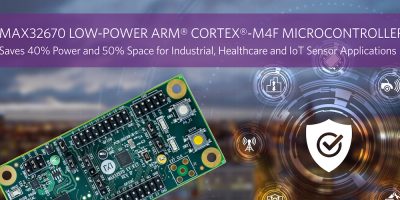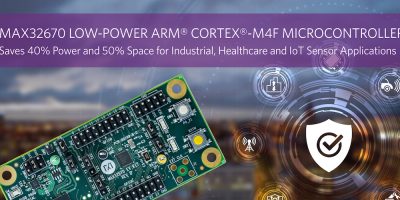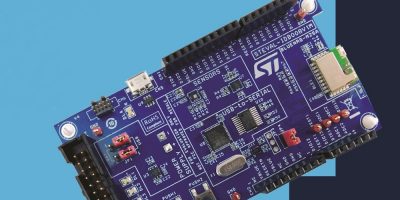Industrial, healthcare and IoT applications can benefit from low power consumption and small form factors, using the MAX32670 microcontroller, says Maxim Integrated.
The Arm Cortex-M4 microcontroller reduces the power consumption and size while increasing the reliability of industrial, healthcare and IoT applications and protects all embedded memory for both flash and SRAM with error-code correction (ECC).
In many industrial and IoT applications, high energy particles and other environmental challenges can threaten to bombard memory and create bit flips during the normal course of operations – especially as process nodes drop to 40nm and below, warns Maxim. This can disrupt microcontroller operation and produce incorrect results. The MAX32670 protects its entire 384kbyte flash memory and 128kbyte SRAM with ECC. With this protection, single-bit errors are detected and corrected by hardware.
Active power consumption is just 40 microW/MHz and the MAX32670 executes commands from flash at 40 per cent lower power than the closest competitive industrial microcontroller, claims Maxim. It is also claimed to be the lowest power device available for battery-operated sensor applications. It is supplied in a 1.8 x 2.6mm WLP and 5.0 x 5.0mm TQFN and claimed to be 50 per cent smaller than the closest competitor, offering reductions in overall size as well as material costs.
The MAX32670 is available now and there is also an evaluation kit, the MAX32670EVKIT#.
Maxim Integrated develops analogue and mixed-signal products and technologies to make systems smaller and smarter, with enhanced security and increased energy efficiency. Maxim’s customers operate in the automotive, industrial, healthcare, mobile consumer and cloud data centre sectors.







